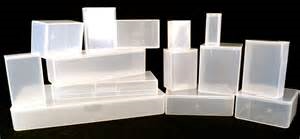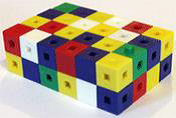Volume of rectangular prisms - Measurement and Geometry
K-10 Mathematics Stage 3 - Measurement and Geometry: Volume and Capacity
Warm up
YouTube: Volume Song
Name the different objects used as examples of measurement in the video?
How many dimensions does a cubic unit have?
What are the dimensions called?
Stage 1: Concrete - Hands on activity

How many blocks did it take to fill each of the plastic containers? How many layers did each container have?

Using the image above
How many blocks were used to build the front layer?
How many layers in the prism?
How many blocks were used to build the whole prism?
How many rectangular or square prisms can you make using 18 cubes? Use the graph paper to show your answers
Stage 2: Pictorial - Visual
Decomposing rectangular prisms
GeoGebra activity
If C represents the length of the prism and A represents the height, what does B represent?

Can you make a square prism from 18 centimetre cubes? If so, how many layers will you have?
Can you make a cube using 18 centimetre cubes? If so, how many layers will you have?